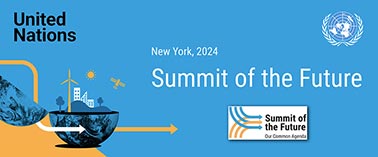New HIV (human immunodeficiency virus) infections have fallen 22%, and HIV-related deaths have decreased by 40% globally, according to estimates published in The Lancet HIV journal on Monday. This highlights significant progress in the global fight against the virus but also serves as a stark warning that current trends indicate the world is not on track to meet the UNAIDS 2030 targets.
Despite this progress, the researchers noted in the study that regional variations in the HIV response suggest the world is not on track to reduce new HIV infections and AIDS-related deaths by 90% by 2030. The number of people living with HIV is expected to peak at 44.4 million by 2039, followed by a gradual decrease to 43.4 million by 2050, they said.
The paper revealed that at least 1 million people acquire the HIV infection each year, and the virus remains a major cause of mortality in many countries. More concerning is that, of the estimated 40 million people living with HIV, only about three-quarters are currently on treatment.
As outlined in Sustainable Development Goal 3.3, the target date for ending the HIV epidemic as a public health threat is 2030. “Therefore, there is a crucial need to evaluate current epidemiological trends and monitor global progress towards HIV incidence and mortality reduction goals. In this analysis, we assess the current burden of HIV in 204 countries and territories and forecast HIV incidence, prevalence, and mortality up to 2050 to allow countries to plan for a sustained response with an increasing number of people living with HIV globally,” the authors explained in the study’s background.
The global decline in HIV incidence is largely driven by sub-Saharan Africa, where the likelihood of acquiring the virus over a lifetime has fallen by 60% since its peak in 1995. In contrast, HIV infections are rising in Central Europe, Eastern Europe, and Central Asia, where the lifetime probability of HIV acquisition increased by 586.4% from 1995 to 2021. Furthermore, the number of people living with HIV without suppressed levels of the virus rose by 116.1% from 2003 to 2021.
The authors used the Global Burden of Diseases, Injuries, and Risk Factors Study (GBD) 2021 analytical framework to compute age- and sex-specific HIV mortality, incidence, and prevalence estimates for 204 countries and territories (1990-2021).
“We aimed to analyze all available data sources, including data on the provision of HIV programmes reported to UNAIDS, published literature on mortality among people on antiretroviral therapy (ART) identified by a systematic review, household surveys, sentinel surveillance antenatal care clinic data, vital registration data, and country-level case report data,” the authors stated.
They calibrated a mechanistic simulation of HIV infection and natural history to available data to estimate HIV burden from 1990 to 2021 and generated forecasts to 2050 by projecting all simulation inputs into the future. Historical outcomes (1990-2021) were simulated at the 1,000-draw level to support propagation of uncertainty and reporting of uncertainty intervals (UIs).
“Our approach to forecasting utilized the transmission rate as the basis for projection, along with new rate-of-change projections of ART coverage. Additionally, we introduced two new metrics to our reporting: prevalence of unsuppressed viraemia (PUV), which represents the proportion of the population without a suppressed level of HIV (viral load <1,000 copies per mL), and period lifetime probability of HIV acquisition, which quantifies the hypothetical probability of acquiring HIV for a synthetic cohort, a simulated population aged from birth to death through the set of age-specific incidence rates of a given time period,” they added.
The authors claimed this analysis provides, to the best of their knowledge, the first global estimates of the period lifetime probability of HIV acquisition and PUV (unsuppressed viral load). They included a series of recommendations to sustain and invigorate the global HIV response.
These include strengthening the US President’s Emergency Plan for AIDS Relief (PEPFAR) and other similar public health programmes dedicated to HIV control, as well as expanding prevention services worldwide.










